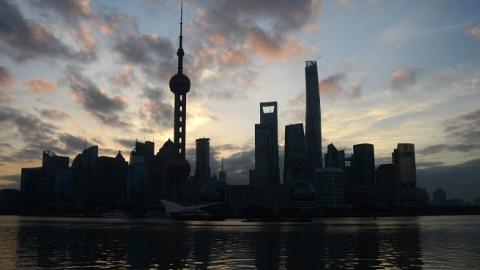In 1980 a book by Harvard University’s Ezra Vogel entitled Japan as Number One became a bestseller, chronicling an economy that had been growing at close to 10 per cent for two decades. We now know Japan was soon to endure its two lost decades of almost zero growth, reaffirming the truism that trendlines offer only a window into the past and are an unreliable way to predict the future.
Today, the same mistaken approach is being made by those who believe we are well into the second decade of what will be a China-dominated Asian century, and that our strategic and defence planners should prepare now as if that is the reality. That China under the leadership of the Chinese Communist Party can continue to grow at a rapid pace is widely seen as a prudent assumption, largely because it has done so successfully in recent decades.
But analysis rather than a faith grounded on trendlines should drive forecasting. And if we assess China and its political economy like we would any other nation, the common wisdom that this will be China’s century is soon revealed to be built on shaky foundations. Among many, there some key weaknesses.
Take the drivers of China’s economic growth across the past decade. There are only three ways to grow an economy: add more labour, add more capital or use these inputs more productively (also known as total factor productivity). As economist Paul Krugman pointed out 20 years ago in his observations about the economic malaise experienced by the Japanese and Soviet economies, rapid growth based on expansion of inputs rather than on using these inputs more productively is inevitably subject to diminishing returns and ultimately unsustainable.
Such economic axioms may seem unexciting but they serve as a better guide to the future than do trendlines. Consider China’s impressive record of having grown its economy by 162 per cent from 2004 to 2014. How this was achieved matters greatly. Additional labour contributed about 6 per cent, but an enormous 136 per cent can be attributed to capital inputs in the form of fixed investment (for example, building things). This means that only 20 per cent of growth has resulted from advancements in TFP.
So what? The enormous level of capital inputs needed to generate such growth has meant national corporate debt levels have risen from 147 per cent of gross domestic product at the end of 2008 to more than 250 per cent at the end of June last year. To put this in some context, the expansion of debt — which has been used primarily to finance capital inputs — from $US9 trillion-$US10 trillion in 2008 to $US20 trillion-$US25 trillion last year exceeds the size of the US commercial banking system.
The result is what China’s own state-sanctioned economists lament as not just the largest national building program the world has known but also the most wasteful: underused roads, airports that are practically empty, newly built “ghost cities” that are wholly abandoned, and enough empty units and townhouses to cater for the expected increase in urbanisation for the next 20 years at least.
In short, China has doubled down on Japanese errors from several decades ago and then some. Unlike Japan, authoritarian China lacks the institutions, such as the rule of law and adequate intellectual property rights, needed to join the 30 or so countries that have escaped the dreaded middle-income trap to become advanced economies. Dismantling China’s state-dominated political economy and winding back the power and privileges of the Communist Party — even if it is in the country’s long-term interest — will be fraught politically and highly disruptive to an already fragile economy.
With more people leaving the workforce than entering it this year, China will be the first large country to grow old before it grows even moderately rich.
Up to a quarter of its growth from 1980 to 2005 can be attributed to a “demographic dividend”: the massive increase in productivity generated by the combination of declining fertility levels and a mass of young workers entering the workforce with limited familial and other responsibilities.
Such good fortune has passed. By 2035, China will have the same demographics as ageing societies in western Europe today without the degree of preparedness of these advanced economies.
These and other challenges, combined with the structural inevitability that the heady days of double-digit growth are over, will deeply intensify competing demands on the national purse, with consequences for the Communist Party’s capacity to enhance national power. Concealed bad debts arising from the enormous capital waste are estimated to be 70 per cent to 140 per cent of GDP.
As state-owned banks are ultimately government liabilities, these have to be dealt with by the government. Unfunded pension liabilities could amount to $US10.8 trillion in the next two decades, or 40 per cent of GDP, and this is generously assuming growth does not slow from present levels.
For a government that already spends more than 15 per cent of its budget on national security, the double-digit increases for the People’s Liberation Army and People’s Armed Police will be increasingly difficult to achieve or justify. This will make the task of catching up to US military might much more difficult to achieve for the untested PLA. And still China confronts an external environment in which China has not been able to change the strategic orientation of even one major power in the region and remains a strategically isolated rising power.
Finally, news of the demise of China’s primary competitor, America, is clearly greatly exaggerated and the US remains far superior in virtually every factor that matters to the economy: institutions, innovation, age demographics and resource security to name just four. We are almost certainly heading towards an increasingly contested Asia, but one tilted heavily in favour of the US and its allies.















